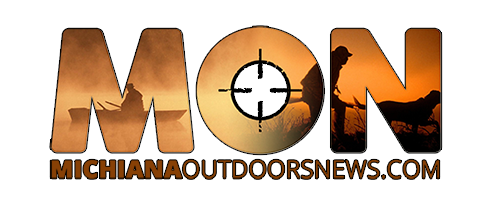- Details
(Provided by Indiana DNR)
Youth hunters can apply for a reservation to hunt one of 21 DNR properties during the special youth wild turkey hunting season, April 18 and 19.
The hunters must be younger than 18 on the day of the hunt.
- Details
Got a case of winter doldrums? The Michiana Boat & Sport Show might be a good remedy and a reminder that spring isn’t far away.
The show opens Friday at the South Bend Century Center and runs through Sunday.
Admission is $3 for adults; children under 12 are admitted free. All gate receipts go to the Michiana Walleye Club to support its activities and stocking programs.
Last year’s inaugural show proved to be a good start and promoter Dale Brindley hopes to build upon that this year.
- Details
(Provided by Indiana DNR)
The Indiana Natural Resources Commission has approved rules that include a limited river otter trapping season beginning this fall.
New rules allow river otter trapping in 66 counties that are within watersheds where river otters were released during the 1990s. Trappers will not be allowed to take river otters in 26 central Indiana counties where river otters were not reintroduced and where otters have not become established.
In addition to the county restrictions, a licensed trapper can take no more than two otters per season with a statewide quota of 600 otters. The trapping season will be Nov. 15 to March 15, unless the statewide quota is reached sooner.
The rules also allow for the sale of hides from legally taken river otters.
- Details
The Bremen Conservation Club will conduct its annual Ice Fishing Derby Jan. 24 at Lake of the Woods.
Entry fee is $10 per person. Registration begins at 5 a.m. at the Community Building and fishing competition runs from 6 a.m. to 3 p.m.
Cash prizes range from $200 to $50 for first through fifth and determined by the longest total length of legal fish. Only fish over six inches will be measured.
- Details
(Provided by BPS Marketing)
FORT WAYNE, Ind. - For the first time, adventurists of all ages can zipline from almost three stories high and soar over a 25,000-gallon kayak lagoon Jan. 23-25 at the Coliseum's first large consumer show of the year - the 6th annual Outdoor Sports, Lake & Cabin Show.
Showgoers will be able to take flights and fish in two stocked ponds as part of a fundraiser set up for the Honor Flight Northeast Indiana chapter - a nonprofit that raises money to honor World War II military veterans by sending them on a one-day all expense paid trip to Washington D.C. to visit the war memorials, with each flight costing around $60,000.
And for the first time in Fort Wayne, official Bass Pro Shop products like Polaris snowmobiles, all-terrain and utility vehicles, Tracker and Nitro Performance fishing boats, and Sun Tracker pontoons will be available for purchase and on display through Schnelker Marine Focus PowerSports. A team of professional anglers will present winter bass fishing seminars in addition to a health and fitness, and disaster survivalist speaker series.
Among the return of boat rides, youth archery lessons and an air rifle shooting range, are new show features including chainsaw woodcarving demonstrations (and auction for the honor flights), fly-fishing instruction, bicycle test rides, inflatable BB gun range, solar-paneled log cabin and vintage military vehicles on display from the National Military History Center.


